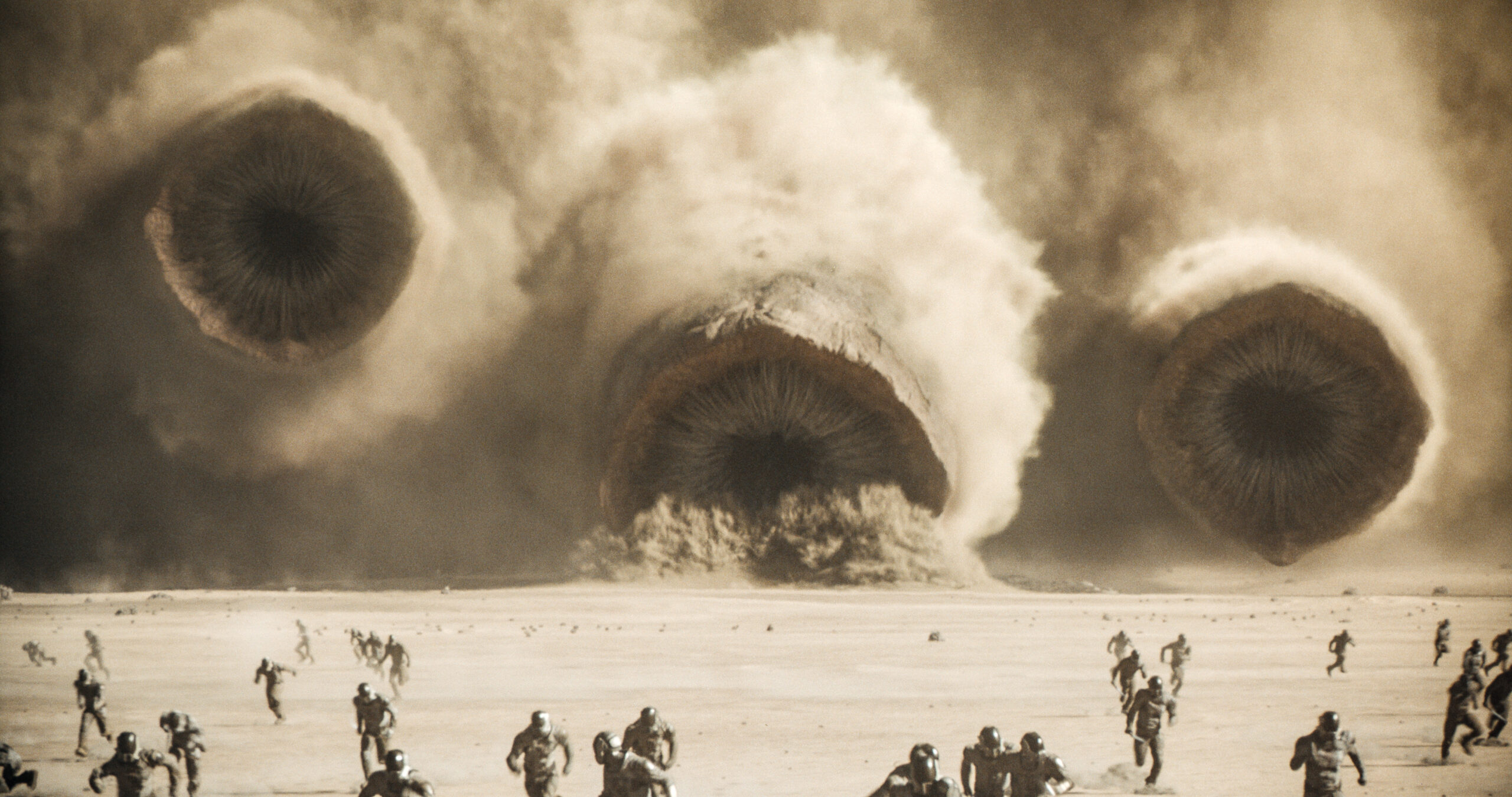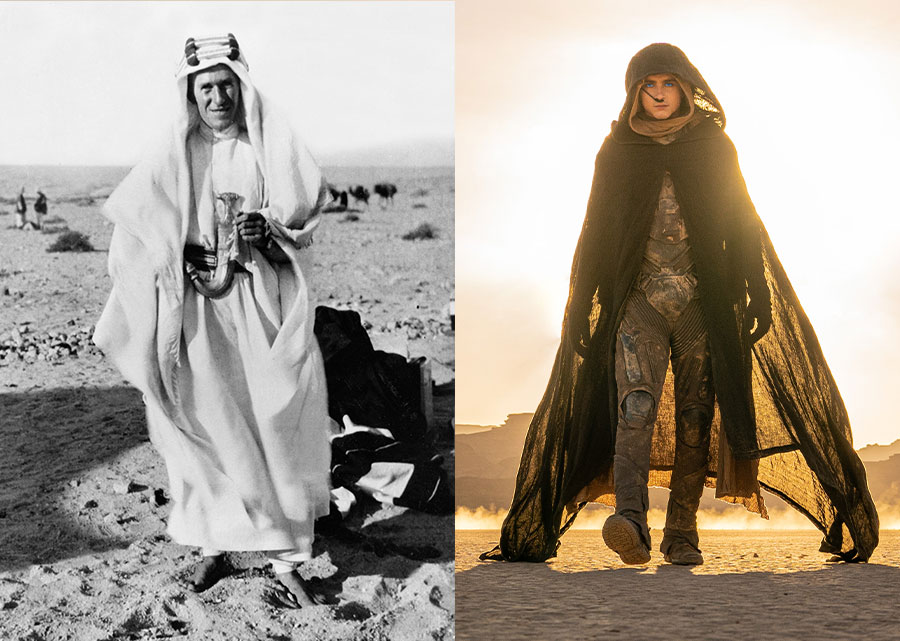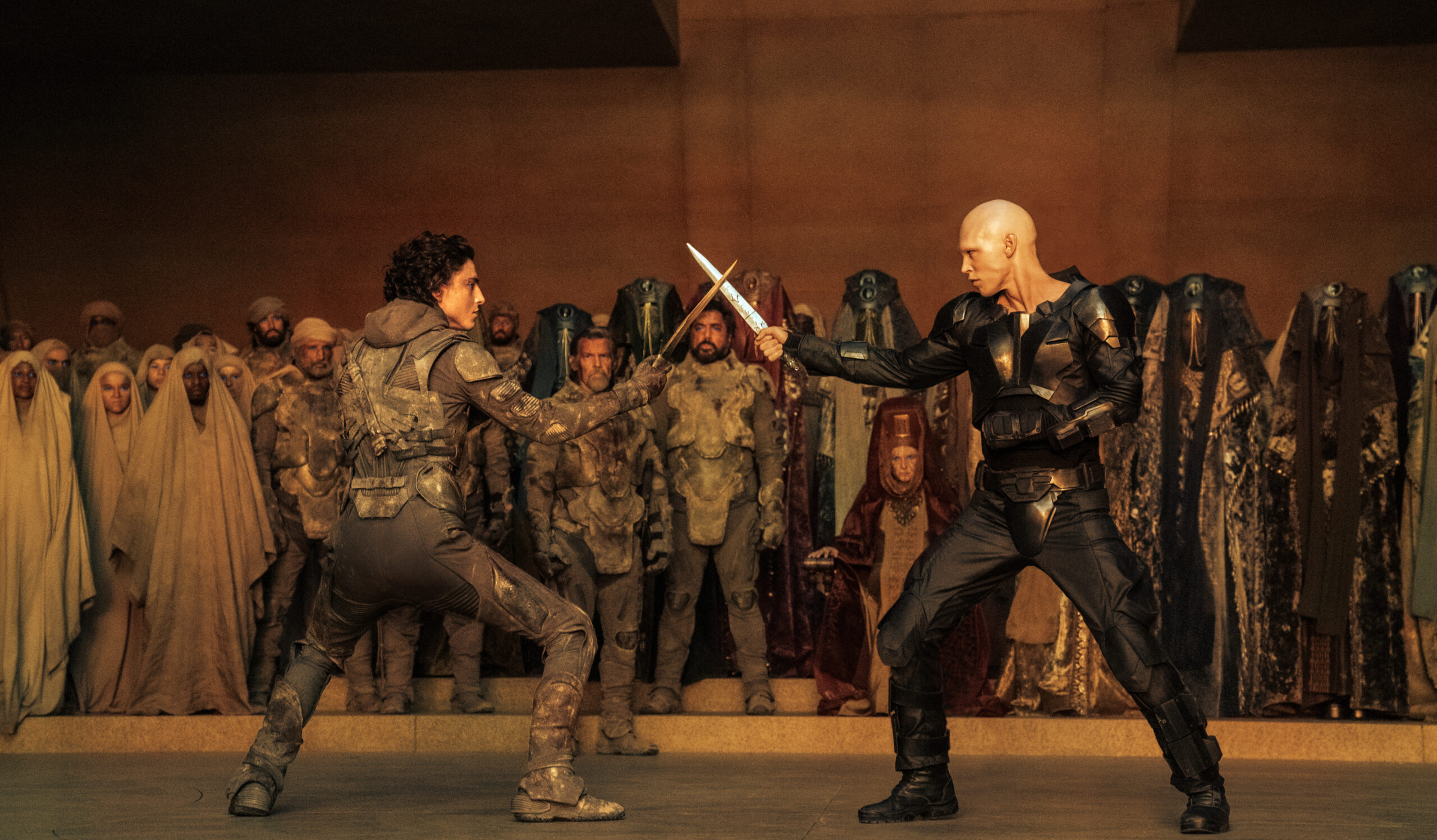‘Dune: Part Two’ and ‘Lawrence of Arabia’: How The Modern Action Franchise Echoes the 1962 Film Classic

Timothée Chalamet returns as hero Paul Atreides in 'Dune: Part Two,' which hits theatres on March 1. Photo: Courtesy Warner Bros. Pictures
You’d be forgiven if by the end of Denis Villeneuve’s 2021 sci-fi spectacle Dune you assumed the whole thing leaned a bit white saviour.
The 56-year-old Quebecois director’s adaptation of Frank Herbert’s trippy 1965 novel concluded its first part just as Paul Atreides, the intergalactic regent played by heartthrob Timothée Chalamet, survived an attack that all but wiped out his family line. Atreides embeds himself with the Freman, an indigenous community on the desert planet Arrakis, which has been occupied for decades by colonial forces extracting its precious spices. He arrived on Arrakis as ambassador for those colonial forces but is instead eager to learn the Freman ways and utilize their desert power to fight another day. He also entertains the possibility that he might be their saviour during a rebellion against the very oppressors with which his family was in league.
The plot could, at first glance, come off as very Dances with Wolves meets Avatar, to name a couple of other Oscar Best Picture nominees about colonialism that shamelessly embraced white saviour tropes. But Villeneuve laces his hero’s journey with an anxiety that truly comes into focus in Part Two, as does the influence of the landmark movie that the director acknowledges as having a big hand in shaping his filmmaking: Lawrence of Arabia.
Like David Lean’s majestic 1962 film about British archaeologist T.E. Lawrence, Dune, the 2021 film, and the sequel Dune: Part Two (in theatres March 1), boast serene plumes of sand, blood orange sunsets and tiny specks of people captured across these spacious vistas on breathtaking large format film. But the shadow Lawrence of Arabia casts across Dune goes beyond aesthetics. Both are rousing spectacles about rebellion and warfare trip-wired with a deflating and purposeful cynicism.

The earlier classic, easily among the greatest films of all time, is based on T.E. Lawrence’s accounts of his role during the century old Arab revolt against the Ottoman Empire. Lawrence, a brash and eccentric British archaeologist and soldier, played magnificently in the movie by a then–barely known Peter O’Toole, embeds himself with Bedouin rebels in the Palestine and Sinai regions. He’s thrilled to learn the indigenous community’s ways and proves a formidable leader when melding their tactics with his own. But as Lawrence of Arabia patiently unfolds, the soldier who some describe as having “gone native,” loses his way, gives in to an inherited sense of entitlement, believes himself to be the saviour who could liberate the community from oppression and ultimately reinforces the very colonialism he claims to be fighting.
Lawrence of Arabia wasn’t a white saviour narrative but a sweeping and critical view of how such destructive, self-styled saviours are deluded by a mirage of their own. And the character happened to be an influence on Herbert when he was writing Dune. Call Paul Atreides “Lawrence of Arrakis,” which is the point Villeneuve’s 2021 Dune teased at and that his ambitious and thrilling sequel finally gets around to making.

If Villeneuve’s first movie was spectacular, it was also spectacularly thin, luxuriating in the scenery (both real and digital) and carefully setting up the elements needed for Part Two but barely giving us enough story to justify its more than two-and-a-half-hour runtime. Instead of marching steadily towards the conflict and decisive turns packed into Dune: Part Two, it felt like we were doing one of those circuitous Freman sandwalks – taking a step forward, sliding to the side, avoiding any sense of rhythm.
Dune: Part Two, with its imposing and meaningful payoff, retroactively makes the earlier film’s patience worthwhile. The movie rises to the occasion when it comes to awe-inspiring action – those riveting displays of tactical combat and sandworm surfing – and also engaging in the politics that hold up a mirror to history and current events. The sequel lands with uneasy tension and fury and an understanding of how colonial forces co-opt everything from religious fanaticism to the struggle against violent oppression, ultimately serving their own agendas. That’s such a winning note to end on (in how it embraces moral failure) that I can’t help but hope Villeneuve pulls the plug on a planned third instalment.

Dune: Part Two doesn’t just feel like a rewarding conclusion to all the attempted screen adaptations of Herbert’s novels, but also the fullest expression of ideas, themes and aesthetics Villeneuve has been working towards throughout his career. Incendies was also a family melodrama rooted in Middle East tension. Sicario was also about a white saviour whose moral compass gets lost in a harsh desert landscape. Arrival was another sci-fi movie about learning an alien language and wielding newfound prophetic powers for strategic advantage.
Dune has always been on Villeneuve’s mind. And, intrinsically, so too has Lawrence of Arabia.
Dune: Part Two is in theatres on March 1, 2024.
RELATED: